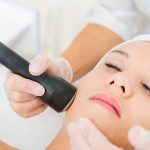If you’ve ever inquired with your dermatologist to remove marks of sun damage or smooth wrinkles on your face, the phrase “chemical peel” have probably been mentioned. Perhaps you’ve heard about friends’ glowing outcomes.
This is the scoop: “A chemical peel is a resurfacing technique used to improve the quality of the skin,” claims Debra Wattenberg MD, who is a dermatologist board-certified located in New York City.
While it may sound easy, the procedure may be quite a grueling one depending on the type of chemicals used and the extent to which they penetrate into the skin. “A peeling solution, most commonly an acid, is applied to the skin to remove the outer layer,” Dr. Wattenberg. Before you make an appointment (or avoid the procedure completely), this is the essential information you need about chemical peels and how they work, and whether they’re suitable for your skin and you.
What Are Chemical Peels?
A chemical peel is just one of many instruments a dermatologist could employ to eliminate the age-related spots and reduce the appearance of acne marks or uneven complexion.
How Chemical Peels Work
“The majority of chemical peels use various acids on the skin to create a controlled wound,” says Joshua Zeichner, MD, a dermatologist board-certified located in New York City. While we generally think of cuts as negative items, they’re, in this case they’re not. The procedure takes advantage of the skin’s ability to repair itself. Consequently, the wound repair procedure can increase the appearance of pigmentation as well as the texture of skin, Zeichner says. Zeichner adds.
MOST RECENT IN HEALTHY SKIN
Types of Chemical Peels
There aren’t any chemical peels that are similar, so you may have a different experience based on the degree of acidity and the thickness that the peel is, explains Wattenberg.
Here are three major kinds.
Superficial or Light Chemical Peels“These types of peels are used to treat mild acne or uneven skin tone, or just to brighten up your skin, and most commonly they contain glycolic or salicylic acid,” advises Wattenberg. Salicylic acid is a great way to reduce acne bumps on your face as well as in other troublesome locations, such as the back. Since this acid is beta-hydroxy acids that can penetrate hair follicles and pores, treating acne from the root.
While glycolic acid is one of the forms of alpha hydroxy acid, which remains on the skin’s surface and acts as an agent for peeling.
This is a gentle peel, which means it is possible to expect dryness as well as slight exfoliation, according to Wattenberg. Because this kind of peel is very superficial, peels are able to be performed at intervals of two or five weeks.
“But remember, even the glycolic and salicylic acids can vary in strength,” Wattenberg says. Wattenberg. It means there’s a variety of levels of what is considered to be a “light peel.
- Medium Chemical Peels
These are a great way to treat the physical signs of sun damage that is more severe, more deep lines, as well as wrinkles that are more noticeable, according to Wattenberg. “Traditionally these peels contain trichloroacetic acid (TCA) in combination with other chemicals, and peeling may continue for five to seven days,” advises Wattenberg. TCA is an acid that can be found in several depths within the surface of your skin (depending on the amount employed) and is considered the most effective chemical peel.
- Deep Chemical Peels
It is by far the most intense type of peel. They require longer downtime and are generally only for those who have extensive wrinkles, sun damage, or fine lines, according to Wattenberg. “These may contain stronger combinations of TCA, phenol, and other chemicals,” she says. Phenol is one of the strongest chemicals that is used in deep peels, and it has the ability to penetrate the skin’s lower layers. skin.
Who to See for a Chemical Peel
“The depth of the peel, the skin type, and the issue you are addressing should determine who should be performing the procedure,” advises Wattenberg.
Certain light chemical peels can be purchased on the market with small amounts of active ingredients. other types of light peels can be safely performed in medical spas, or in the office of an aesthetician, according to Zeichner.
Deep and medium peels differ. “Professional peels contain high concentrations of the active compound that penetrates deeply into the skin, so it is important that it’s performed by a professional like a dermatologist or plastic surgeon to make sure you have an even, safe, and effective peel,” Zeichner continues. Make sure that your dermatologist and surgeon are board-certified by searching for them on the American Board of Dermatology or the American Board of Plastic Surgery websites.
Wattenberg’s rule of thumb is “The deeper the peel, the darker your skin, the riskier the procedure, and therefore the need to see a more trained and qualified professional.”
When to Get a Chemical Peel
The first step is to consult your physician about chemical peels and if you’re a candidate. “Chemical peels are a great option if you have dark spots, fine lines or wrinkles, prominent pores, or irregular texture,” Zeichner says.
EDITOR’S PICKS IN HEALTHY SKIN
Potential Skin Benefits of a Chemical Peel
For the advantages, a mild chemical peel can aid in improving your skin’s appearance and texture, as well as lessen the visible appearance of wrinkles and fine lines. If you’ve got an intermediate chemical peel, your skin may appear more smooth, while deeper peels provide an entirely different appearance and feel on your skin.
In addition to their advantages for cosmetics, Chemical peels are also utilized to remove acne scars as well in skin conditions that affect the complexion’s color.
Chemical peels can assist in the removal of the precancerous skin growths.
Possible Complications of Chemical Peels
Although it’s a rare result, chemical peels that are high in concentration can result in permanent scarring, Zeichner says. “The most common potential risk associated with a chemical peel is a permanent or long-term change in the skin pigmentation,” Zeichner says. People with darker skin tones are at greater risk of changing their skin color.
“Inflammation can cause the skin to heal with extra pigment in the form of a dark black blotch, or it can block pigment production, leading to a light blotch,” Zeichner says. The positive side? “These pigmentary changes usually improve on their own over several months,” the doctor adds.Still, there are some individuals who should stay clear of chemical peels completely. If you’re suffering from Heart disease risk, Avoid long peels of phenol.
Deep peels may (but very rarely) cause serious complications, such as liver, heart or kidney failure.
Pregnant women suffer from regular outbreaks of Cold sores (a peel may cause flare-ups) and are prone to scar tissue, also known as keloids Or, have you taken the medication dubbed isotretinoin (Myorisa, Claravis) in the last six months? Should be wary of chemical peels.
Important to note: Deep peels are performed in a surgical environment, and you’ll be under general anesthesia.
How to Prepare for a Chemical Peel
When you see your physician, they’ll conduct an examination and assist in determining which kind of peel is suitable for your skin and you, according to Wattenberg. They’ll also discuss your medical history and inform you about any potential risks associated that may arise from the procedure.
If you’re planning to get a deep or medium peel, your dermatologist will likely require a particular skincare routine for 2 to 4 weeks prior to the peel. This routine will help to prepare the skin in preparation for more favorable results.
The treatment regimen could comprise a prescription retinoic cream or gel. Retinoids originate from vitamin A and aid in reducing the skin’s outermost layer to allow the chemical substances to be absorbed more deeply and effectively within your skin.
There is a chance that you will be given an agent that bleaches your skin called hydroquinone, along with the retinoic cream, in the event that you suffer from hyperpigmentation or the skin is blotchy.
Furthermore, your doctor may also suggest you take antiviral medications to help prevent infection. He may also advise against sunlight exposure during the days before your peel. It is also possible to stay clear of facial masks or scrubs, as and removal of hair treatments during the week leading up to the procedure.
Be sure to find a way to get home (especially in the event that you’ll be asleep for the treatment). Also, when planning the procedure, avoid choosing a date that falls near an important occasion, suggests Wattenberg. “It takes time for the skin to recover from the peel,” she says.




